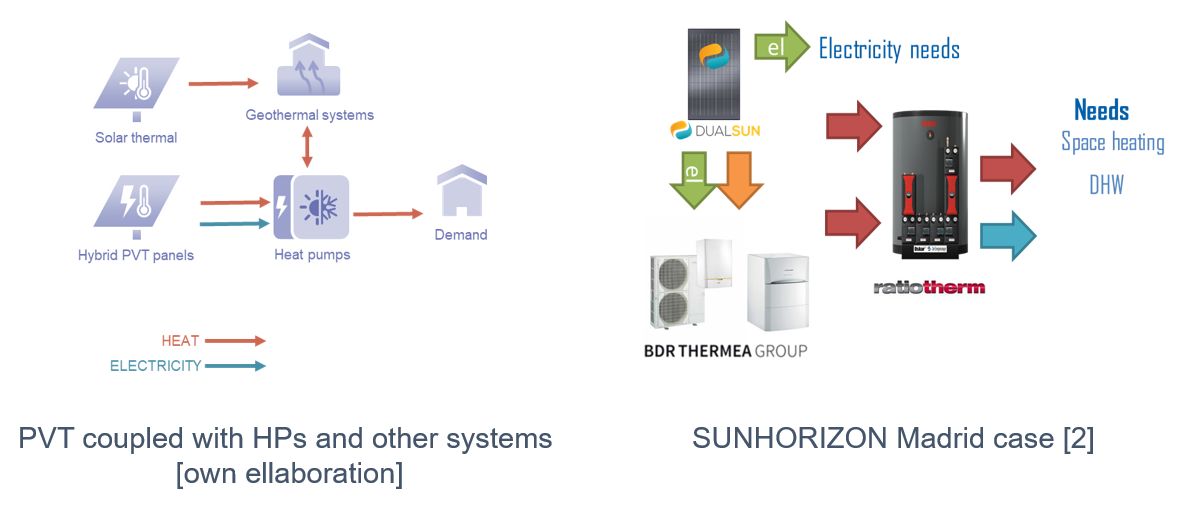In the case of a photovoltaic-thermal (PVT) hybrid system, both heat and electricity are generated. The heat production of these panels can be used to reduce fossil fuel consumption and at the same time, satisfy the same supply of domestic hot water and space heating. The heat could also be supplied to a low-temperature district heating system to increase the contribution of renewable energy sources (RES) and avoid associated emissions of greenhouse gas (GHG).
The main limitation is the temperature range (typically, 45ºC supply). Thus, PVT is usually coupled with low-temperature demands, e.g., groundfloor heating or swimming pools, or with heat pumps to boost the temperature supply (e.g., from 45ºC to 60ºC or 80ºC, depending on the heat pump).
The electricity production can be used to power the building systems, be stored, or even be sold to the grid, increasing the RES contribution, generating money savings, and avoiding the emission of GHG. There are also some synergies in PVT panels like the optimization of the occupied roof area and better overall module efficiency, thanks to the reduction of hot spots and, the reduction of the module's temperature, increasing its life span and electricity production up to 5-15%
Some innovative examples are:
- PV-T thermal output to be boosted with a reversible heat pump (that can use the panels even during the night) and electricity production to cover the heat pump's electricity consumption (where: in SunHorizon project, in northern countries with a CO2 heat pump and in southern countries with a reversible heat pump).
- Hybrid photovoltaic/thermal and ground source heat pump (PVT+GSHP), that can be implemented with energy storage/borehole recharge for direct heating and pre-heating.

Figure: PVT coupled with HPs and other systems, and PVT coupled with a reversible heat pump and a tank to produce space heating and domestic hot water needs. It could also be coupled with a swimming pool.
Comments ()